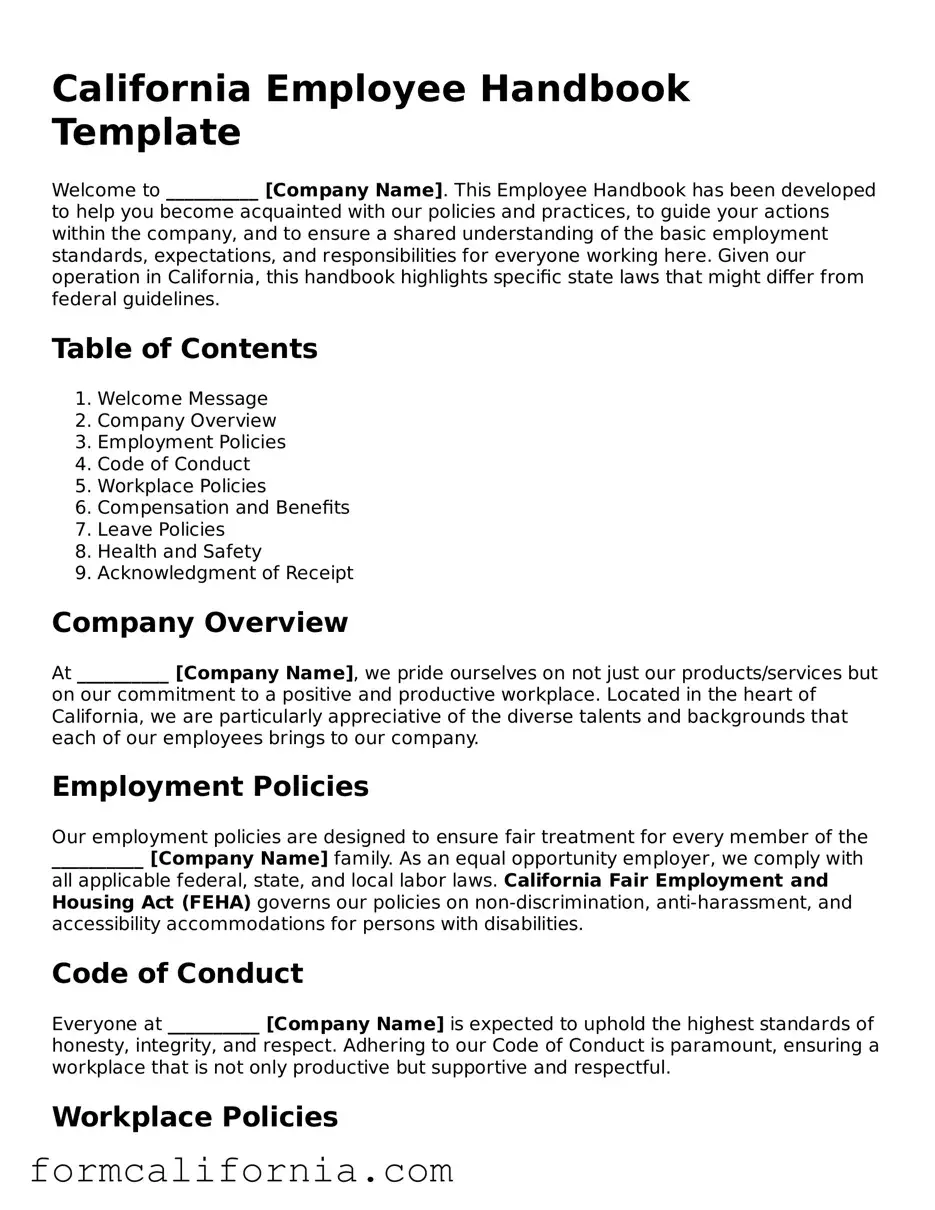California Employee Handbook Template
Welcome to __________ [Company Name]. This Employee Handbook has been developed to help you become acquainted with our policies and practices, to guide your actions within the company, and to ensure a shared understanding of the basic employment standards, expectations, and responsibilities for everyone working here. Given our operation in California, this handbook highlights specific state laws that might differ from federal guidelines.
Table of Contents
- Welcome Message
- Company Overview
- Employment Policies
- Code of Conduct
- Workplace Policies
- Compensation and Benefits
- Leave Policies
- Health and Safety
- Acknowledgment of Receipt
Company Overview
At __________ [Company Name], we pride ourselves on not just our products/services but on our commitment to a positive and productive workplace. Located in the heart of California, we are particularly appreciative of the diverse talents and backgrounds that each of our employees brings to our company.
Employment Policies
Our employment policies are designed to ensure fair treatment for every member of the __________ [Company Name] family. As an equal opportunity employer, we comply with all applicable federal, state, and local labor laws. California Fair Employment and Housing Act (FEHA) governs our policies on non-discrimination, anti-harassment, and accessibility accommodations for persons with disabilities.
Code of Conduct
Everyone at __________ [Company Name] is expected to uphold the highest standards of honesty, integrity, and respect. Adhering to our Code of Conduct is paramount, ensuring a workplace that is not only productive but supportive and respectful.
Workplace Policies
Our workplace policies cover a broad area of employment aspects from day-to-day operations to employee privacy considerations. It is essential for all employees to familiarize themselves with these policies. Special attention should be given to the California Labor Code, which provides specific rights in terms of breaks, overtime, and minimum wage requirements unique to the state of California.
Compensation and Benefits
At __________ [Company Name], we strive to offer competitive compensation and comprehensive benefits. These include but are not limited to health insurance, retirement plans, and paid time off (PTO). The California Paid Sick Leave law guarantees employees a minimum number of paid sick days per year, further details of which are outlined in our specific benefits documentation.
Leave Policies
Understanding the importance of balance in our employees' professional and personal lives, we provide a variety of leave options. This includes leaves of absence under the California Family Rights Act (CFRA), which offers protections similar to the federal Family and Medical Leave Act but also includes additional provisions specific to California residents.
Health and Safety
The health and safety of our employees are of utmost importance at __________ [Company/Corporation Name]. Adherence to the California Occupational Safety and Health Act (Cal/OSHA) standards is compulsory, ensuring a safe and healthy working environment for all.
Acknowledgment of Receipt
It is essential that all employees read, understand, and acknowledge the receipt of this handbook. The acknowledgment form should be signed and returned to the Human Resources department within the first week of employment.
